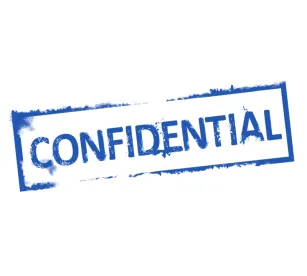Weber, Inc. v. Provisur Technologies, Inc. (IPR-2020-01556)
Earlier this year, the Patent Trial and Appeal Board (PTAB) held in Weber v. Provisur Technologies, Inc. that operating manuals under lock and key did not constitute “printed publications” and thus were not eligible as prior art for inter partes proceedings under 35 U.S.C. § 311(b). In its rationale, the PTAB pointed to a number of factors, such as the limited number of manuals that were distributed, an inscription within the manuals designating them as confidential, and widespread expectation of confidentiality within the industry, among others.
Weber filed a petition requesting an IPR of claims 1-16 of U.S. Pat. No. 10,625,436 (the ’436 patent), which was the subject of parallel patent litigation. The ’436 patent is directed to a high-speed slicing machine for food articles, with independent feeding and weighing capabilities. The petitioner had challenged the claims of the ’436 patent as obvious in view of two of its own operating manuals relating to slicer machines in combination with an issued patent.
The key issue in this proceeding was whether Weber had sufficiently shown that its own operating manuals qualified as “printed publications” under 35 U.S.C. § 311(b). Under this section, claims may be challenged only on the basis of prior art consisting of patents or “printed publications.” Whether a reference constitutes a “printed publication” is dependent on whether c“persons interested and ordinarily skilled in the subject matter…exercising reasonable diligence can locate it."1 Furthermore, “[w]here a distribution is made to a limited number of entities, a binding agreement of confidentiality may defeat a finding of public accessibility.”2
Weber argued that operating manuals along with the accompanying slicer machine products were allegedly distributed to others as early as November 15, 2007, predating the earliest priority date of the ’436 patent of May 1, 2020. Weber also brought forth evidence that the machines for which the operating manuals were made were publicly advertised in magazine articles. In addition, Weber provided testimonial evidence from its own employees that the operating manuals and the machines were shown in trade shows, and thus available to interested members of the public.
Patent owner Provisur argued that the operating manuals did not constitute “printed publications” due to the confidentiality surrounding these manuals. First, Provisur pointed out that the manuals themselves contained inscriptions restricting transferal from the initial recipient and that the accompanying sales and delivery agreement prohibited their distribution. Second, Provisur noted that there was a widespread expectation of confidentiality of product manuals in the industry. Third, Provisur presented evidence that customers themselves treated the manuals as confidential, with one customer storing the manuals in a locked and caged room inside a facility requiring key card access.
In view of the facts and evidence, the PTAB ruled that the operating manuals did not qualify as “printed publication[s],” as Weber failed to show that these manuals were accessible to “interested and ordinarily skilled” persons. In support of its ruling, the PTAB noted that the manuals were distributed to only 10 unique customers. The PTAB also pointed out that these manuals required confidentiality, as laid out in the agreements with purchasers and inscribed in manuals themselves. The PTAB further observed that customers themselves had kept these manuals private, highlighting that one kept them under lock and key. Of note, the PTAB expressly gave less weight to the testimony from Weber’s employees that customers had access to the manuals in trade shows, noting their interest in the outcome of the case.
The outcome and the rationale of Weber v. Provisur is relevant to both prosecution and litigation. From a patent prosecution angle, an invention may have been discussed with third parties under confidentiality agreements (e.g., non-disclosure agreements) prior to filing. In such scenarios, the scope and the confidentiality of these agreements and the disclosure should be closely examined. From a litigation perspective, parties must carefully consider whether materials with characteristics analogous to the Weber case may be used in challenging the claims of a patent. As of this writing, the PTAB’s decision is subject to appeal.
ENDNOTES
1 Kyocera v. ITC, 891 F.3d 1368 (Fed. Cir. 2018)
2 Cordis Corp. v. Boston Sci. Corp. 561 F.3d 1319 (Fed. Cir. 2009)




 />i
/>i

